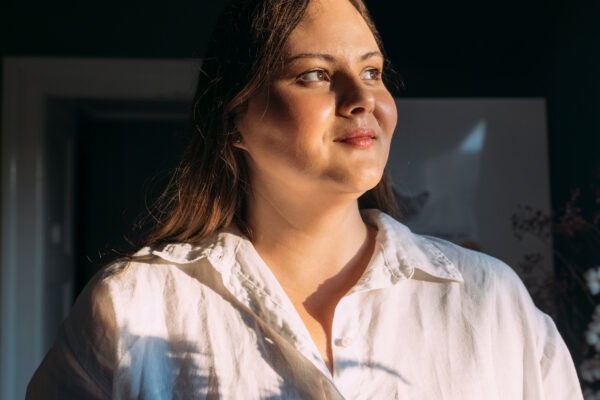How to Live Longer and Better
By Jamie Bussin, featuring Dr. Colleen Hartwick ND
Most of us know that people today are living longer than previous generations. Advances in medicine, technology, and public health have added years to our lives. But the real question is: are we living better? For many families, including my own, the reality of aging doesn’t always look like the glossy brochure version of “the golden years.” Instead, it can mean juggling medications, struggling with mobility, or needing extensive support just to get through the day. That’s where the idea of healthspan comes in. I discussed the concept with naturopath, Dr. Colleen Hartwick ND, on Episode #397 of The Tonic Talk Show/Podcast. This is a digest of that conversation.
What Is Healthspan?
As Dr. Hartwick explains, healthspan is not just about how long you live, but how well you live. “Healthspan really refers to the total number of years people spend disease-free,” she says. Think of the grandparent who’s still cooking, cleaning, staying active, and keeping sharp well into their 90s. That’s healthspan.
Traditionally, the focus has been on lifespan—simply counting years. But if those years are spent dealing with chronic illness, reduced mobility, or diminished independence, the value is questionable. As Dr. Hartwick points out, longer life without health can also bring enormous financial strain from medications, caregivers, and uncovered healthcare expenses.
The encouraging part? Many of the choices we make earlier in life have a direct impact on whether we can extend not just our years, but the quality of those years.
Why Healthspan Starts Young
It’s tempting to think of healthy aging as something we deal with in retirement. But the truth is, the work begins decades earlier. I learned this personally: at 38 years old and 242 pounds, I realized I was heading down a dangerous path. Poor sleep, sluggishness, and low energy were red flags that my later years might not look good if I didn’t make changes. Losing more than 50 pounds didn’t just transform how I felt in the present—it was an investment in my future healthspan.
As the saying goes, “An ounce of prevention is worth a pound of cure.” According to Dr. Hartwick, there’s no better time than now to start prioritizing healthspan—no matter your age.
Nutrition: Building the Foundation
So where do we begin? Food, naturally, is the foundation.
“What we eat on a day-to-day basis impacts us first at the cellular level,” says Dr. Hartwick. “That expands out to the whole body.” A nutrient-rich diet is one of the most powerful tools we have for extending healthspan.
Here are her key recommendations:
- Fruits and vegetables: Packed with fibre, vitamins, minerals, and antioxidants that support gut health and reduce inflammation.
- Healthy fats: Omega-3 fatty acids (from sources like fish, walnuts, flax, or algae) help curb inflammation and support brain and heart health.
- Legumes and lean proteins: Essential for muscle maintenance and repair.
- Complex carbs: Foods like sweet potatoes and brown rice offer steady energy and important nutrients.
- Herbs and spices: Often overlooked, these are some of the most concentrated sources of antioxidants, helping combat oxidative stress that accelerates aging.
The big picture: a diet low in ultra-processed foods and rich in whole, colorful, nutrient-dense ingredients sets the stage for longevity.
Supplements: Closing the Gaps
Even with a strong diet, supplements can play a key role. As Dr. Hartwick explains, modern farming practices mean our foods often don’t contain the same micronutrient density they once did. Plus, lifestyle and geography (especially for those of us in Canada) can make it harder to get everything we need from diet alone.
Some of her foundational supplements include:
- Magnesium: Vital for stress regulation and sleep—two major factors in healthy aging.
- Vitamin D3 and K2: Critical for immune support, inflammation control, and bone density.
- Omega-3s (EPA and DHA): Essential for brain health and reducing inflammation.
- CoQ10: Supports energy production at the cellular level and acts as a powerful antioxidant.
For those who don’t eat enough fruits and vegetables, superfood powders can also help fill the gap.
Exercise: Strength for Body and Brain
Food and supplements build the foundation, but exercise is the structure that supports healthspan. And it’s not just about keeping the body fit—movement benefits the brain, mood, and metabolism too.
Resistance and strength training, in particular, are critical. “Muscles are protective,” says Dr. Hartwick. They not only help with balance and mobility but also regulate blood glucose, hormones, and even cognitive function.
Research shows two of the strongest predictors of longevity are grip strength and quadriceps strength. In other words, strong hands and strong thighs are linked to longer, healthier lives.
Dr. Hartwick recommends:
- Resistance training: Whether it’s lifting weights, bodyweight exercises, yoga, or even rock climbing, building strength is essential.
- Flexibility and balance training: Activities like yoga, Pilates, or step-down drills reduce fall risk—a major health threat in later years.
- Accessibility: Home gyms, resistance bands, or simple dumbbells can make workouts convenient and remove barriers to consistency.
As I’ve found, reducing friction is key. With a home gym, there are no excuses. And as Dr. Hartwick adds, even small “exercise snacks” between tasks—like quick sets with resistance bands—can add up.
The Bottom Line
Healthspan is about making the years you have worth living. That means starting early, focusing on nutrition, filling gaps with smart supplementation, and building strength to protect both body and mind.
As Dr. Hartwick reminds us, it’s never too late to begin—but the earlier we start, the greater the rewards. Investing in healthspan today could mean independence, vitality, and joy well into our later years.
And isn’t that the real goal of longevity?




